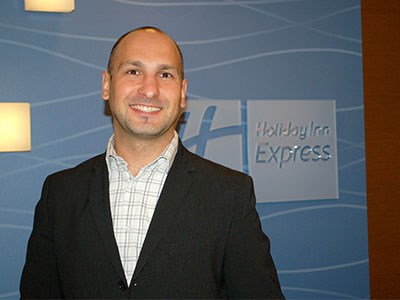A conversation will start this spring about whether Timmins’ hoteliers and tourism-oriented businesses have an appetite to adopt a destination marketing fee.
A tourism master plan comes out in early March which will map the city’s future direction on the hospitality front. It’s expected to provide some clarity and direction on whether a surcharge attached to hotel bills for tourism promotional purposes is a wise move.
Tourism promotion in Timmins is heading in a new direction with the demise of the Shania Twain Centre and the Hollinger Gold Mine Tour.
As a northeastern Ontario city that’s off the beaten track for most recreational travellers, the city’s tourism department wants to introduce the fee as a means to generate some supplemental dollars to attract more conferences and sports tourism events and to promote its festivals.
“I think it would create a competitive advantage for the city and its stakeholders,” said Timmins Tourism manager Guy Lamarche.
More than a dozen Ontario communities have destination marketing fees, including Toronto, Ottawa, Niagara Falls and Sault Ste. Marie.
The Sault introduced the fee in 2005, which annually pools about $700,000 from hotel operators that’s earmarked for promotional purposes and product development for attractions like the popular Agawa Canyon Tour Train.
“Sault Ste. Marie with their extra $700 grand can do a lot of magic in the marketplace,” said Lamarche. Some in the community feel Timmins is a hard sell due to its location and that more needs to be done to attract more midsized conventions and industry events like the annual mining show.
Lamarche said raising additional promotional dollars will only enhance Timmins’ visibility as a host city.
“If you’re out of sight, you’re out of mind and you’ve got to be in the marketplace.”
Typically under a destination marketing fee program, participating hotels voluntarily remit about three per cent of room revenues to an accommodations association which then transfers funds to a not-for- profit marketing organization for initiatives to promote their city or region.
The fee appears as a surcharge on a hotel bill.
But it hasn’t always worked smoothly in Ontario. The fees have created controversy in some places because of the lack of regulatory oversight and transparency.
In 2008, Ontario’s Consumer Ministry issued a warning to Niagara Falls hotel and restaurant operators not to claim that the fees are for tourism marketing initiative if it’s not being remitted to a legitimate non-profit agency.
But sometimes non-participating hotels or restaurants will still charge them under another label.
John Crescenzi, manager of the Holiday Inn Express in Timmins, remembers when Toronto was introducing a destination fee program in the late 1990s, one major hotel chain refused to participate but still charged its guests a hospitality fee and pocketed the money.
He and other hotel operators fear introducing such a move could create some negative impacts.
“I think we’re very cautious,” said Crescenzi, who founded a local hoteliers group, Hospitality Organization Strengthening Tourism, last year. “We don’t want to rule us out as a community to do business in because we charge a fee that other communities don’t.”
Crescenzi said the fee might be palatable to his members if the rest of northeastern Ontario adopted it as a regional initiative.
He said these fees are also voluntary and some travellers may balk at paying it and ask for it to be removed from their bill.
But without a major year-round tourism attraction in town or a large-scale conference facility, some in the hospitality sector feel Timmins is selling from an empty wagon.
Crescenzi said there’s been scant information on how this scheme would work since the city circulated an advisory bulletin from the province last fall.
“There are so many questions,” said Crescenzi. “Where is the money remitted to? What do we intend to see if it’s intended to market the community? We’re marketing what we don’t have.”
Lamarche said Ontario’s Ministry of Tourism, Culture and Sport appears to be hands-off when it comes to giving hospitality groups the leeway to come up with a mechanism that works best for them.
Who will eventually champion a fee program locally remains to be seen.
“I don’t know what form it will take, but I do know it’s got to be industry-led,” said Lamarche, who added the city could administer the funds to ensure transparency.
“I don’t want to lead this. We’re not here to dictate, we’re here to partner.” Lamarche, who favours a three per cent charge, said the revenue generated should be earmarked for “very strategic and product- oriented” marketing promotions, to drive a festival agenda to put “heads in beds,” and possibly to squirrel away money in a reserve fund or trust account to be used as leverage to pursue government money for future tourism capital projects.
He wouldn’t go as far as saying the coverage area should extend outside of Timmins but acknowledged that outlying areas would benefit from the extra marketing reach that a fee would provide the City of Timmins with.




